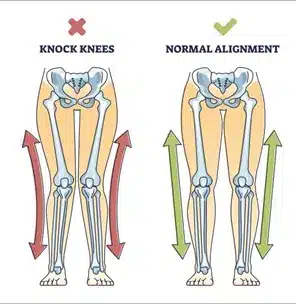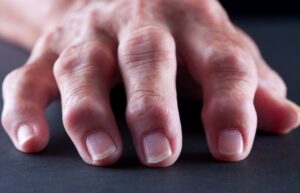Knock knees, also known as genu valgum
Knock knees is a condition in which the knees angle inward and touch each other when the legs are straightened. While knock knees are common in young children, they usually correct themselves as the child grows older. Most children’s knees do turn in slightly and is a normal part of development between the ages of 2-4 years, and usually resolves. However, in some cases, the condition may persist and require treatment.
Knock knees may cause pain or discomfort in the knees, hips or ankles, and early arthritis as an adult. Patients may have difficulty walking or running and can have a tendency to trip or fall. It needs treatment after age 4, if severe, if causing pain, or tripping.
Knock knees can be caused by a variety of factors, including genetics, injury, or underlying medical conditions. In some cases, the condition, may be idiopathic, meaning that there is no clear cause.
Physiotherapy can help alleviate the symptoms of knock knees and improve the alignment of the legs. Treatment may include:
- Balance and stability exercises
- Strengthening exercises to improve the muscles around the knees, hips and feet
- Gait training to improve walking and running mechanics
- Orthotics may be needed to help support the legs and improve alignment
- Exercise advice
- Footwear advice

In some cases, surgery may be necessary to correct severe knock knees. However, physiotherapy is often effective in treating milder cases.
If you have concerns about your child’s leg alignment, it is important to consult with a Paediatric Physiotherapist. They can assess your condition and develop a treatment plan tailored to your child’s needs. With proper treatment, many patients with knock knees are able to improve their symptoms and lead active, pain-free lives.


